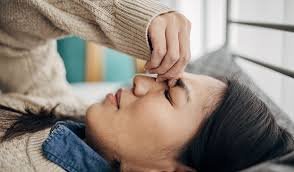Migraines are a prevalent neurological condition that affects millions of people worldwide. Characterized by intense, debilitating headaches, migraines can significantly impact daily life. Understanding the symptoms and exploring various treatment options can help those suffering from migraines manage their condition more effectively.
Recognizing Migraine Symptoms
Migraines typically progress through four stages: prodrome, aura, headache, and postdrome. Not everyone experiences all four stages, and symptoms can vary widely.
- Prodrome Stage This initial stage can occur hours or even days before a migraine attack. Symptoms include:
- Mood changes (e.g., irritability, depression, or euphoria)
- Food cravings
- Neck stiffness
- Increased thirst and urination
- Frequent yawning
- Aura Stage Aura affects about 25% of migraine sufferers and usually occurs before the headache phase. Symptoms are primarily visual but can also affect other senses and motor functions. They include:
- Visual disturbances (e.g., seeing flashes of light, zigzag patterns, or blind spots)
- Sensory changes (e.g., tingling or numbness in the face or hands)
- Difficulty speaking
- Temporary vision loss
- Headache Stage This is the most debilitating phase, lasting from a few hours to several days. Symptoms include:
- Intense, throbbing pain on one or both sides of the head
- Sensitivity to light, sound, and sometimes smell and touch
- Nausea and vomiting
- Blurred vision
- Lightheadedness, sometimes followed by fainting
- Postdrome Stage Following the headache, individuals often feel drained and fatigued. Symptoms include:
- Confusion
- Moodiness
- Dizziness
- Weakness
- Sensitivity to light and sound
Common Triggers for Migraines
Identifying triggers can help manage migraines. Common triggers include:
- Stress: Emotional stress is a significant trigger for many people.
- Hormonal Changes: Fluctuations in estrogen levels can trigger migraines, particularly in women.
- Dietary Factors: Certain foods and beverages, such as aged cheeses, alcohol, and caffeine, can trigger migraines.
- Sleep Patterns: Both lack of sleep and excessive sleep can provoke migraines.
- Environmental Factors: Bright lights, loud noises, and strong smells can be triggers.
- Medications: Certain medications can trigger migraines in susceptible individuals.
Treatment Options for Migraines
While there is no cure for migraines, various treatments can help manage symptoms and reduce the frequency and severity of attacks. These treatments can be categorized into acute treatments and preventive treatments.
- Acute Treatments Acute treatments aim to relieve symptoms during a migraine attack. They include:
- Over-the-Counter (OTC) Medications: Non-prescription pain relievers such as ibuprofen, aspirin, and acetaminophen can be effective for mild migraines.
- Triptans: Prescription medications like sumatriptan and rizatriptan can help relieve pain and other symptoms by constricting blood vessels and blocking pain pathways in the brain.
- Ergots: Medications such as ergotamine and dihydroergotamine can be effective, especially when taken soon after migraine symptoms start.
- Anti-nausea Medications: Drugs like metoclopramide and ondansetron can help relieve nausea associated with migraines.
- CGRP Inhibitors: Newer medications like ubrogepant and rimegepant target calcitonin gene-related peptide (CGRP) pathways involved in migraine attacks.
- Preventive Treatments Preventive treatments aim to reduce the frequency, severity, and duration of migraines. They include:
- Beta-Blockers: Medications like propranolol and metoprolol are often prescribed to prevent migraines.
- Antidepressants: Tricyclic antidepressants like amitriptyline and selective serotonin reuptake inhibitors (SSRIs) like fluoxetine can be effective.
- Antiseizure Medications: Drugs such as topiramate and valproate can help reduce migraine frequency.
- CGRP Monoclonal Antibodies: Injectable medications like erenumab, fremanezumab, and galcanezumab are designed to prevent migraines by targeting CGRP pathways.
- Botox Injections: OnabotulinumtoxinA (Botox) injections are approved for chronic migraines and can provide relief for up to three months.
- Lifestyle Modifications: Regular exercise, a healthy diet, adequate sleep, and stress management techniques can help prevent migraines.
Complementary and Alternative Treatments
In addition to conventional treatments, some people find relief from migraines through complementary and alternative therapies, including:
- Acupuncture: This traditional Chinese medicine technique involves inserting thin needles into specific points on the body to alleviate pain and prevent migraines.
- Biofeedback: This technique teaches individuals to control physiological functions such as muscle tension and heart rate, which can help manage migraine symptoms.
- Herbal Supplements: Supplements like butterbur and feverfew have been shown to reduce migraine frequency in some studies. However, it is essential to consult a healthcare provider before starting any new supplement.
- Magnesium and Riboflavin: Magnesium deficiency has been linked to migraines, and supplements can help prevent attacks. Riboflavin (vitamin B2) has also been shown to reduce migraine frequency.
Conclusion
Migraines are a complex and often debilitating condition with various symptoms and triggers. Understanding these symptoms and exploring a range of treatment options, including medications, lifestyle changes, and complementary therapies, can help individuals manage their condition more effectively. If you suffer from migraines, it is crucial to work with a healthcare provider to develop a personalized treatment plan that addresses your specific needs and improves your quality of life
